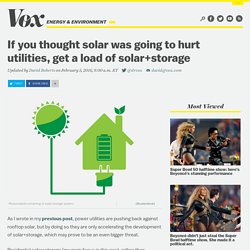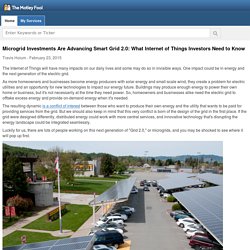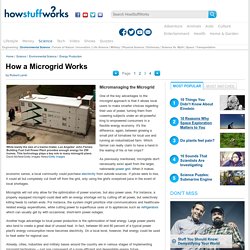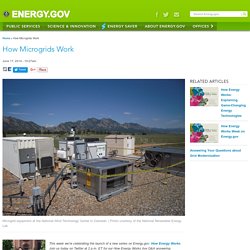

20160616 cea renewables electricgrid. If you thought solar was going to hurt utilities, get a load of solar+storage. As I wrote in my previous post, power utilities are pushing back against rooftop solar, but by doing so they are only accelerating the development of solar+storage, which may prove to be an even bigger threat.

Residential solar+storage (my main focus in this post, rather than commercial or utility-scale versions) refers to a) an array of rooftop solar panels connected to b) some means of energy storage, usually a battery or batteries, controlled by c) smart software that enables the system to communicate with the grid. Adding storage to solar radically expands its value — the whole is more than the sum of the parts. The ability to store energy gives the solar homeowner more control over her energy; she can shift her time of use, storing power when it's cheap and selling it when it's more expensive.
And she can potentially participate in larger markets, as we'll see later. Nanodot-based smartphone battery that recharges in 30 seconds. I think this has a wide range of uses and a lot of potential.

It would make hybrids use electric power more than the gas engine. It would be a boost for anything that is battery powered. BigGoofyGuy 7th April, 2014 @ 5:53 a.m. (California Time) This huge, woohoo if they can make large units for storing solar energy cheaply and cleanly. I'll hold off bying my electric car for a couple of years until this avail! Microgrid. Microgrid Investments Are Advancing Smart Grid 2.0: What Internet of Things Investors Need to Know.
The Internet of Things will have many impacts on our daily lives and some may do so in invisible ways.

Microgrid. The Independence of Localized Power Grids - HowStuffWorks. Fortunately for the American public, the move toward a more dependable and efficient power grid isn't a mere grassroots movement. The U.S. Department of Energy is currently pursuing a strategy to create a smart grid, an automated, cleaner and less-centralized means of meeting the nation's energy demands. For more information on this undertaking, read "How the Smart Grid Will Work. " Micromanaging the Microgrid - HowStuffWorks. One of the key advantages to the microgrid approach is that it allows local users to make smarter choices regarding their use of power, turning them from cowering subjects under an all-powerful king to empowered consumers in a flexible energy economy.

It's the difference, again, between growing a small plot of tomatoes for local use and running an industrialized farm. Which farmer can really claim to have a hand in the rearing of his or her crops? As previously mentioned, microgrids don't necessarily exist apart from the larger, nationwide power grid. When it makes economic sense, a local community could purchase electricity from outside sources.
If prices were to rise, it could all but completely cut itself off from the grid, only using the grid's overpriced juice in the event of local shortages. How Microgrids Work. This week we’re celebrating the launch of a new series on Energy.gov: How Energy Works.

Join us today on Twitter at 2 p.m. ET for our How Energy Works live Q&A answering everything you want to know about microgrids. Use #HowEnergyWorks to submit questions and follow the live discussion. What is a microgrid? Energy-Storage-101. Prosumer Microgrid Solutions-סרטון טוב. Energy storage business. SunEdison Storage. Last month, we predicted that one of the country’s big vertically integrated solar companies would make a move into the energy storage business this year by acquiring a U.S.

-based storage company. Here’s the first. On Thursday, solar (and wind) giant SunEdison announced it was acquiring the project development team, four existing projects, and roughly 100 megawatts of project pipeline of Solar Grid Storage. The Philadelphia, Pa. -based startup specializes in packaging lithium-ion batteries and inverters with commercial solar PV projects -- and paying their way by providing lucrative frequency regulation services in the market run by mid-Atlantic grid operator PJM.
Solar plus storage. RMI TheEconomicsOfBatteryEnergyStorage FullReport FINAL. Clean Energy Storage inc. - Energy Storage, Powergrid, Energy Storage Systems. The POWERGRIDTM is Energy Storage Redefined!

3rd Generation LiFeMnPO4; The PowerGrid is on the leading edge of technology that is tailored for each individuals power habits and consumption needs. Each PowerGrid is built and delivered as a turn key system with all the programming, battery management system and necessary interconnection hardware with UL listings. The PowerGrid has been deployed throughout the World, including California where it's customers have enjoyed the SGIP State rebates.
State and Federal Incentives reduce total costs from 50% - 95% If you have existing solar, adding an AES system is easy and seamless. Key Features Technology is changing rapidly, and that includes how we harness, store and use energy for use in our homes and businesses. Unless you’re able to quickly recharge your battery system to keep up with loads being used in the home or business, you will never have enough storage with AGM or GEL, Lead Acid batteries. Renewable Energy Experts. Nomadic Power. Octillion Power Systems. Orison - First Plug and Play Battery for Your Home or Office. Grid Energy Storage: Beyond Batteries. 49. Energy Storage, the Holy Grail of Renewable Energy. The Future of Energy Storage Is Behind the Meter. Today, energy storage is often described as new, emerging or risky.

But tomorrow, one word will suffice: mainstream. In California, we have a near perfect storm of market signals moving the entire energy storage industry forward. On the hardware side, OEMs (battery and inverter manufacturers) have significantly reduced costs, while forward-thinking policymakers and financiers are creating favorable regulatory and market conditions. To date, the industry has focused a lot of attention on grid-scale storage, but it is the massive opportunity behind the meter that will truly move the industry from fledgling to mainstream.
Utilities aren’t the only game in town. The Economics of Battery Energy Storage.
Even Without Subsidies, Energy Storage Is Starting to Rival Conventional Resources. The economics of storage aren't easy to model.

The technology can be used for so many applications -- frequency regulation, equipment upgrade deferral, backup power, renewable energy integration, or peaking power -- that it can be hard to compare storage to conventional generation. The technologies themselves are just as diverse. But the analysts at the financial advisory firm Lazard just did it. And their work yielded some promising results. This week, Lazard released its first-ever analysis of the levelized cost of storage.
There's a lot of debate about whether megawatt-hour costs are the most helpful way to measure competitiveness, since they leave out dispatchability characteristics and specific use cases for technologies.